Why Blog Checklists Are Crucial For Content Creation
With more than 3 million blog posts published a day, it can often feel like a race to pump out as much content as possible. But this tactic of trying to keep your head above water isn’t going to help you stand out if you’re not pushing out the good stuff.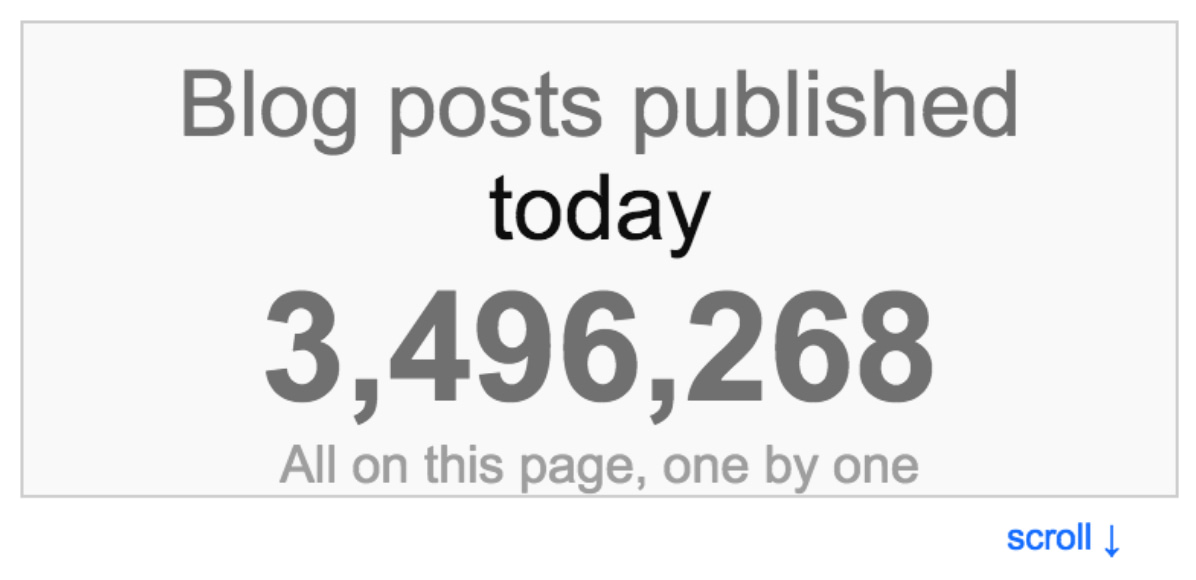
Sure, you can churn out 7 blog posts a day, but are they really going to be valuable to your audience?
Because of this, marketers often struggle to manage the output of content required to stay ahead of the game.
Add to that the fact that there’s all different kinds of content to publish (like social media updates, videos, blog posts, ebooks, and everything in between), and it can be a real nightmare making sure every piece is value-packed and optimized.
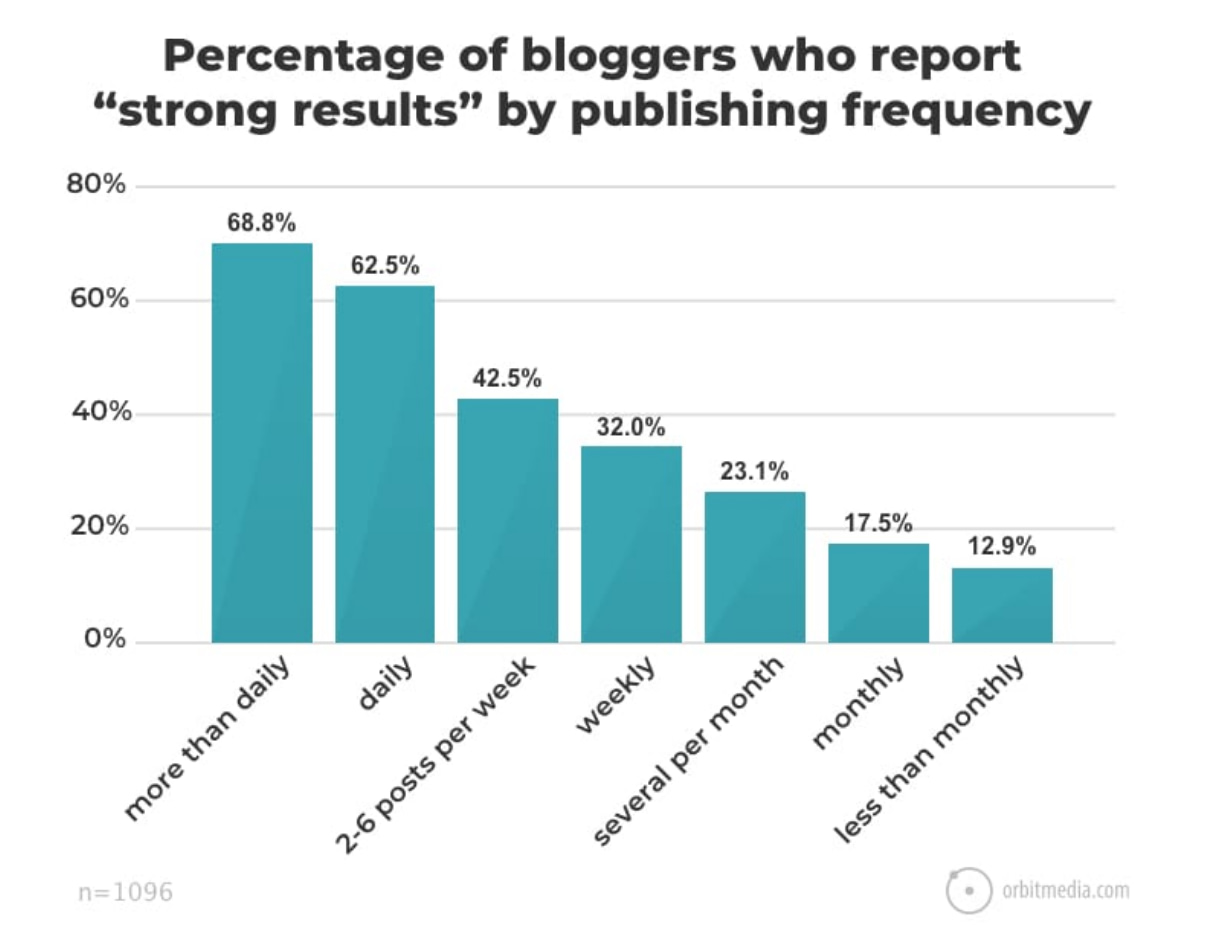
So what’s the solution?
When things get overwhelming, it’s time to write a list.
Or, to be more specific, it’s time to write a blog checklist that you can measure each piece you publish against to make sure you’re definitely, 100%, absolutely putting your best stuff out there.
What is a Blog Checklist?
A blog checklist does exactly as it says on the tin: it’s a checklist of things you need to do and to make sure your content has before you hit the publish button.
It helps streamline the blogging process from the pre-planning stages right through to post-publishing. Because, while it might seem like blogging is an absolute walk in the park (how hard can writing a few words and hitting publish be?!), it’s much harder to blog successfully.
Video: https://youtu.be/D0QJgx_C4rc
Think about it:
As a marketer, you need to wear many different hats at the same time when you’re creating drool-worthy content. There’s on-page optimization, grammar checks, image sourcing, formatting, and a whole host of other must-dos that often go overlooked.
With a blog checklist, you can go through your pre-made list before, during, and after you’ve produced a piece of content to make sure it’s hitting all the goals you’ve set for it.

What to Include in a Blog Checklist
The finer details of what you include in your blog checklist will depend on what your specific goals are with your content. If you’re running a big SEO campaign, you’re going to have a lot more tick boxes for SEO-related elements than if you weren’t.
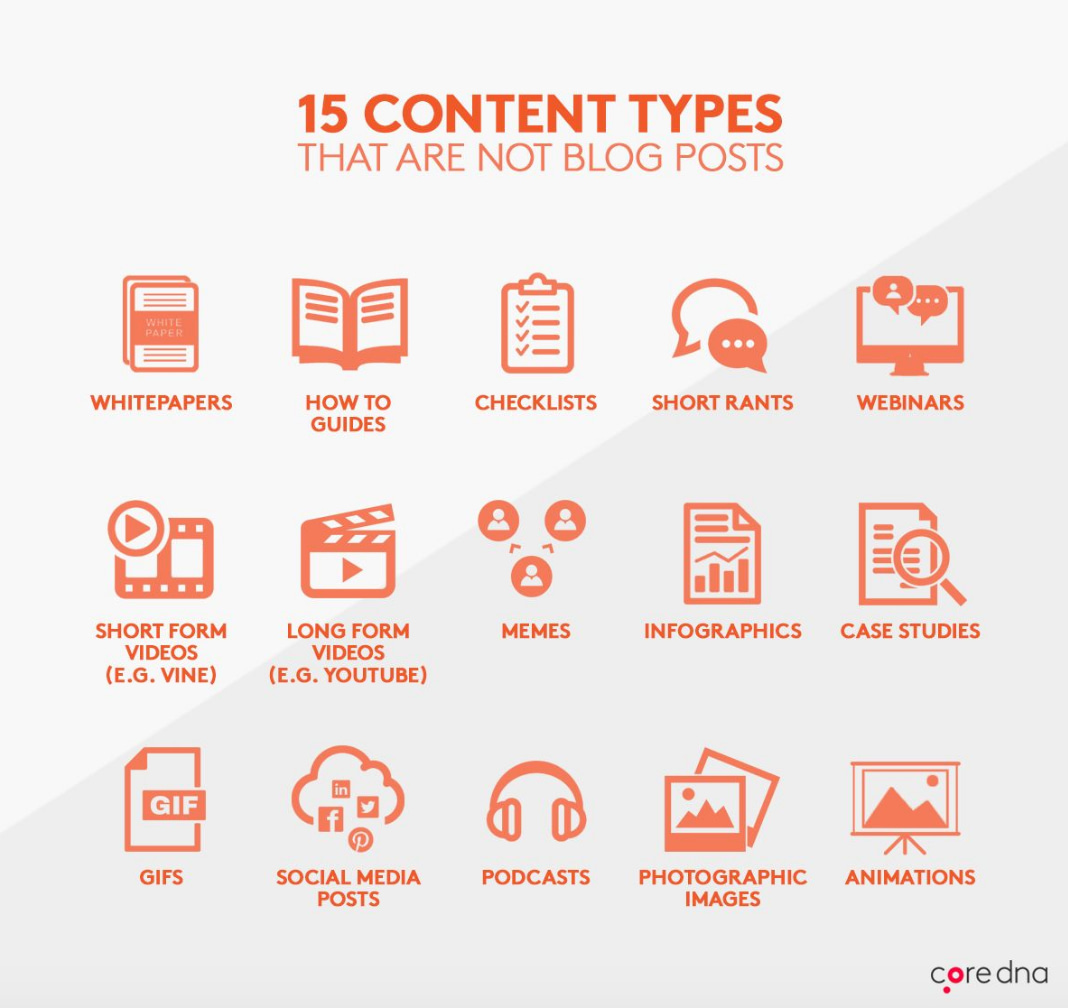
Other kinds of content you can create. Source.
Let’s take a look at a breakdown of a checklist and the different sections you might want to incorporate.
- Content Checklist
This is where you’ll primp and preen the meat of your content, and will feature tick boxes related to the actual piece.
Here are some of the elements I have in the “content” section of my checklist:
- Begin with a strong hook (an anecdote, metaphor, story, statistic, strong opinion, etc)
- One image after the first three sentences
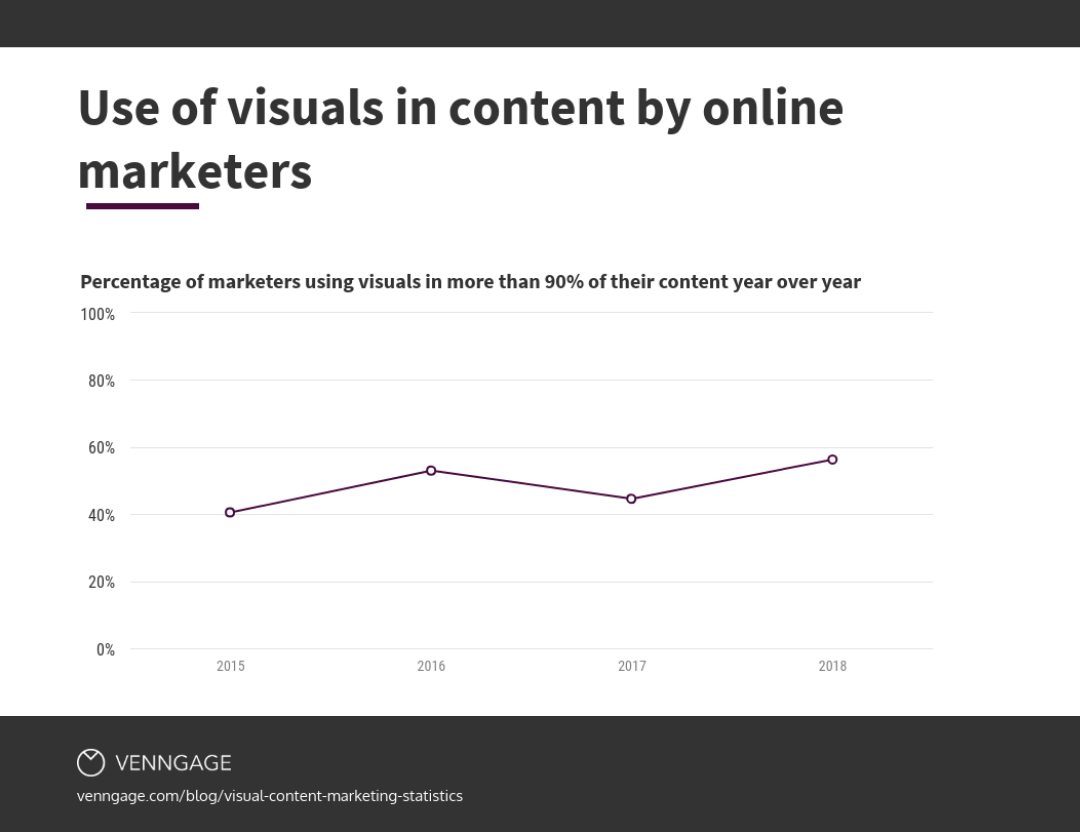
The use of visuals in blog posts is increasing year on year. Source.
- Paragraphs should be no longer than three sentences
- Every argument, claim, strategy, and tip needs to link to its credible source (this includes case studies, reports, quotes, and data)
- Every tip or strategy needs to show or explain a real example
- Use visuals every 3-4 paragraphs or at least 2 images per section (visuals can include images, screenshots, studies and charts, infographics, videos, embedded social media posts)
- Include on academic or education source with a .edu ending
- Provide a conclusion with bulleted takeaways at the end
- Make sure the piece is 1,500-2,000 words long
Checking off the points in this section primes the post to be as engaging and as readable as it possibly can be. A strong hook keeps viewers reading, while lots of visuals break up the text and make it scannable (plus our brain processes images 60,000x quicker than text).

- Headline Checklist
Once the body of your content ticks all the above boxes, it’s time to work your magic on the headline.
This is one of the most important parts of your content, as it’s the thing people will see first if they’re scrolling through social media or Google, and it will help dictate your search engine rankings.
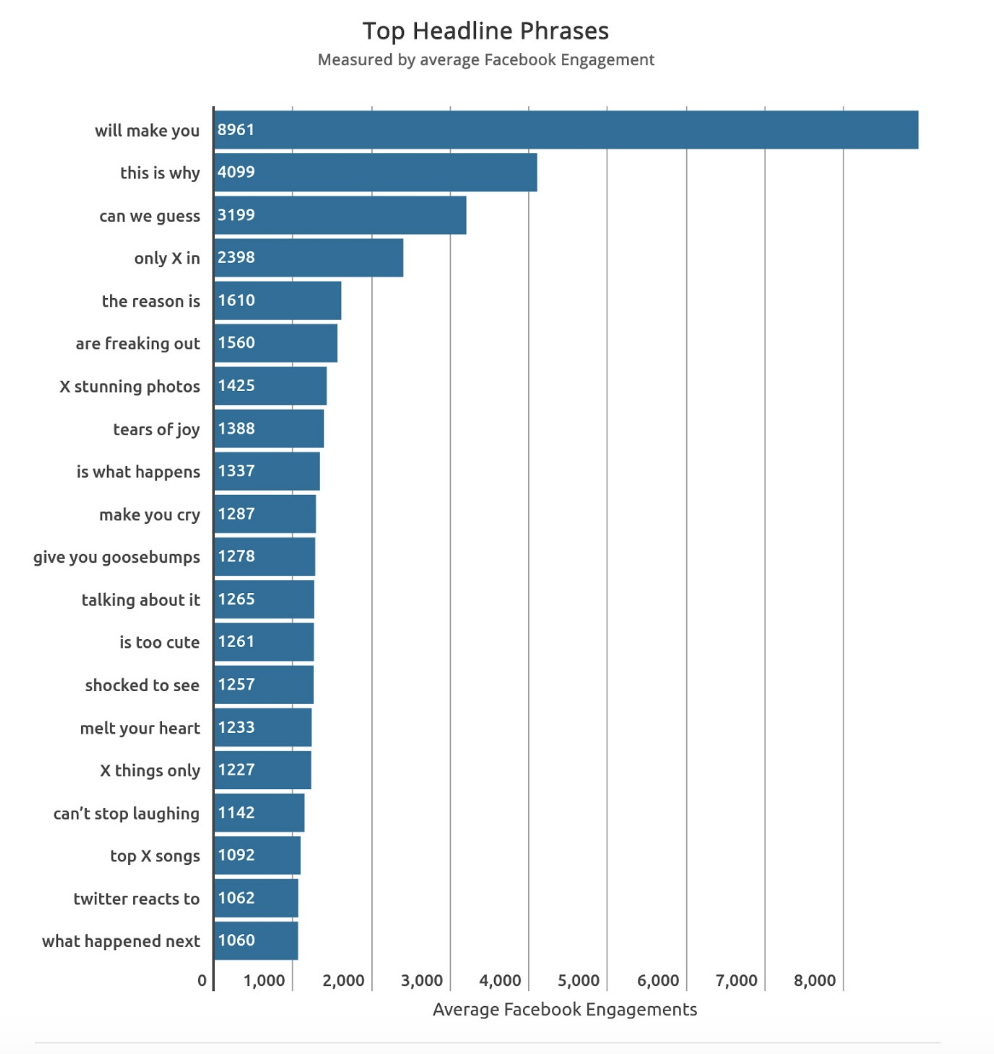
Here’s what I include in this section:
- Provide at least 3 different headline options
- Make sure the headline is less than 12 words
- Use the target keyword in the title at least once
- Add persuasive adjectives and verbs
- SEO Keywords Checklist
Search engine rankings are incredibly important for marketers, and making sure your content ticks all the major SEO boxes should be a high-priority. This will keep your SEO consistent, improving your chances of getting a high-ranking for your chosen keywords.
The SEO keywords section of my checklist includes:
- Use the target keyword 1x in the headline
- Use the target keyword in the first 100 words
- Use the target keyword at least 2x throughout the post
- Use the supporting keywords at least 1x in headers
- Use the supporting keywords at least 2x throughout the post
- Provide 3 meta descriptions of 150 words of less
- Include supporting keyword in the meta description
Video: https://www.youtube.com/watch?v=wAuCkysEJOc
Why Blog Checklists Are the Holy Grail of Content Creation
As you can imagine, trying to remember to do all of the above for every single post is just not possible. You might think that you’ll remember everything you need to do, but something’s going to slip under the radar at some point.
Not only does having a list of things to include in your post make it easier for you to consistently put together amazing content, but it also comes with a whole host of other benefits for both marketers and writers.
Blog Checklists From the Marketer’s Perspective
In the 2018 State of Content Marketing study, brands identified content marketing as the marketing activity that would have the most commercial impact on their business throughout the year.
It’s clear to see the marketers know content marketing is important, but finding the resources and time to constantly create great stuff is stressful.

This is where your trusty blog checklist comes into play.
Having the same process to run through for each blog post can dramatically cut the time spent creating content. But that’s not all.
- Make the Most of Your Successes
When you’ve published a lot of content, you start to notice a pattern between what works and what doesn’t. You can then start incorporating your findings into your blog checklist.
For example, if you notice that posts with three or more videos in capture readers’ attention for longer, make that a requirement in your blog checklist.
- Produce Consistently High-Quality Posts
One of the biggest struggles marketers face is producing engaging content – and is it any wonder with so many posts being published every day?
This struggle is followed closely by “producing content consistently” which, when paired together, shows that marketers face a real challenge when it comes to publishing consistently high-quality posts.
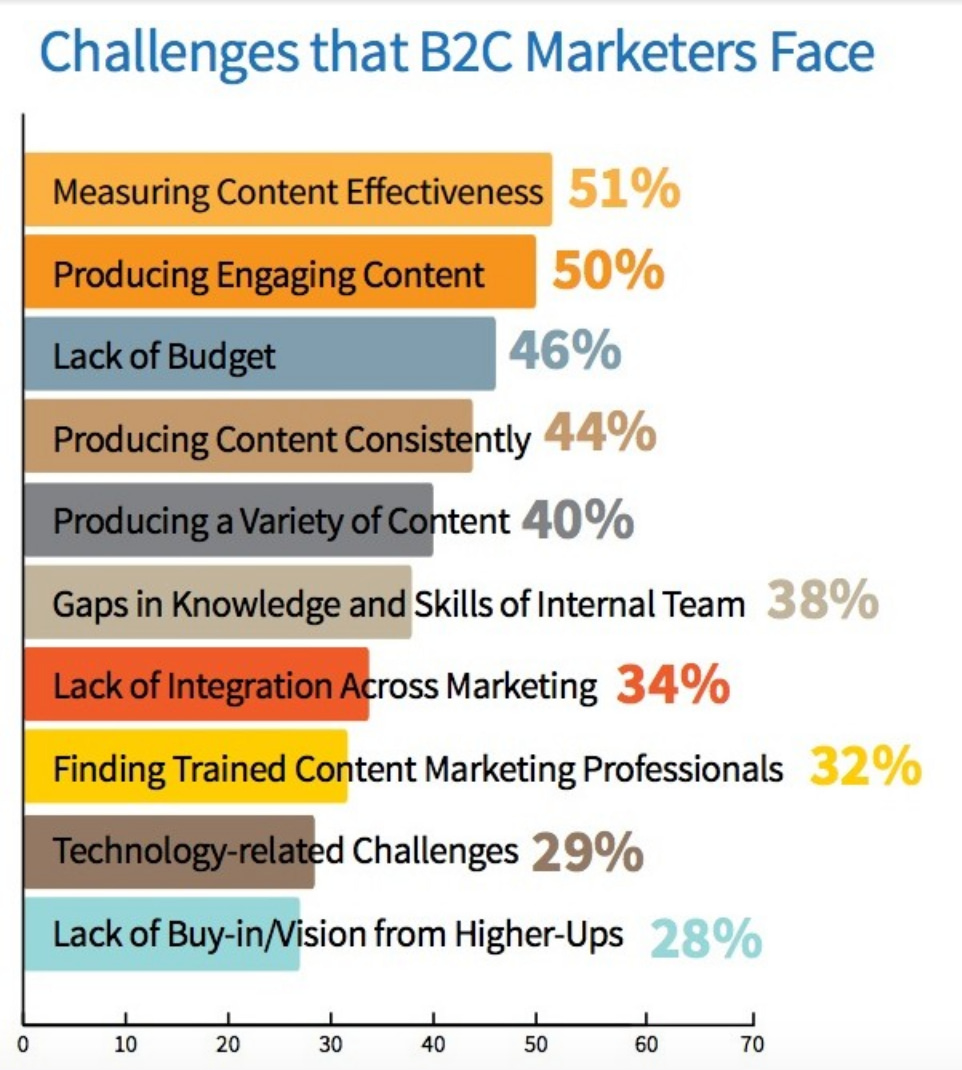
Your blog checklist allows you to make sure you’re incorporating enough sources, stats, and visuals into every piece to keep the quality level as high as it can be.
- Ease of Sharing With Collaborators
Often marketers are working together with writers, designers, and other collaborators on a piece of content, which can make it tricky to maintain consistency if files are getting passed backwards and forwards all the time.
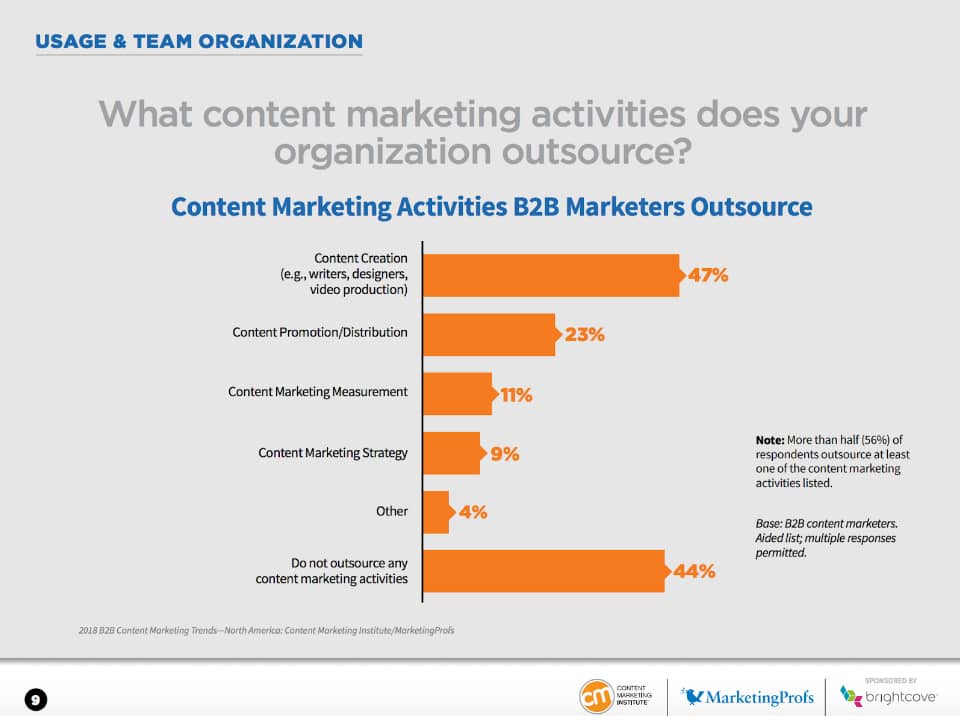
A blog checklist can easily be shared with everyone involved so collaborators know who needs to do what.
- Processes Are Key to Scaling Content
It’s highly likely that you want to ramp up your content creation this year, and rightly so. The more high-quality content you have out there, the more chances there are for potential customers to find you and learn about you.
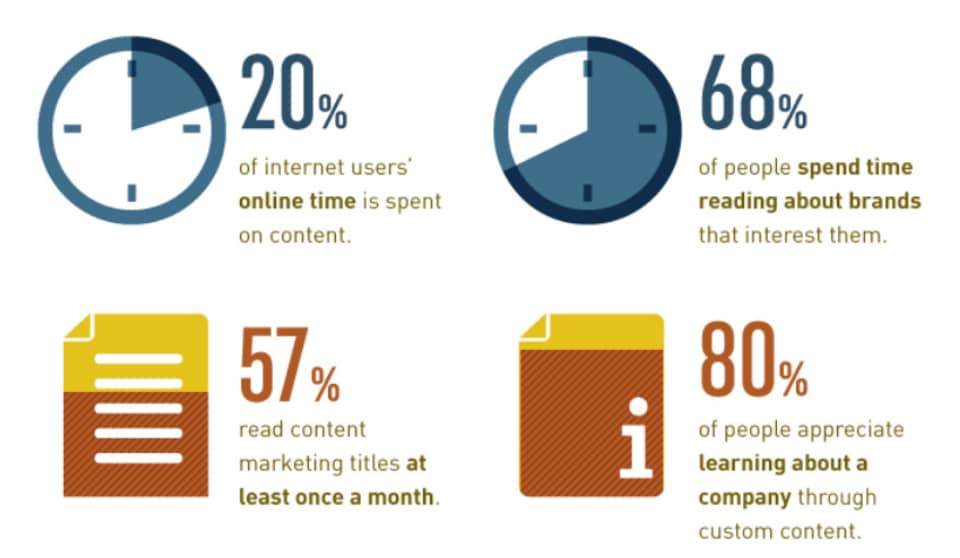
But in order to scale your content output, you need to have strict processes in place that let you streamline the whole affair.
By having a blog checklist, you’re speeding up the quality checking process which means you can start creating more content in the same amount of time.
- Keeps Content Well-Aligned
Making sure a piece of content is well-aligned with a brand’s positioning and personality is vital if you want it to do well.
Misrepresenting a company or sending out mixed messages can turn potential buyers off, which is why a blog checklist can really help keep things aligned.

- Maintains a Consistent Voice
Likewise, having a blog checklist means you can maintain a consistent voice across all your content.
If you’re incorporating the same kind of things and presenting the same show of authority with every piece, your audience are going to start to trust you and keep coming back for more.
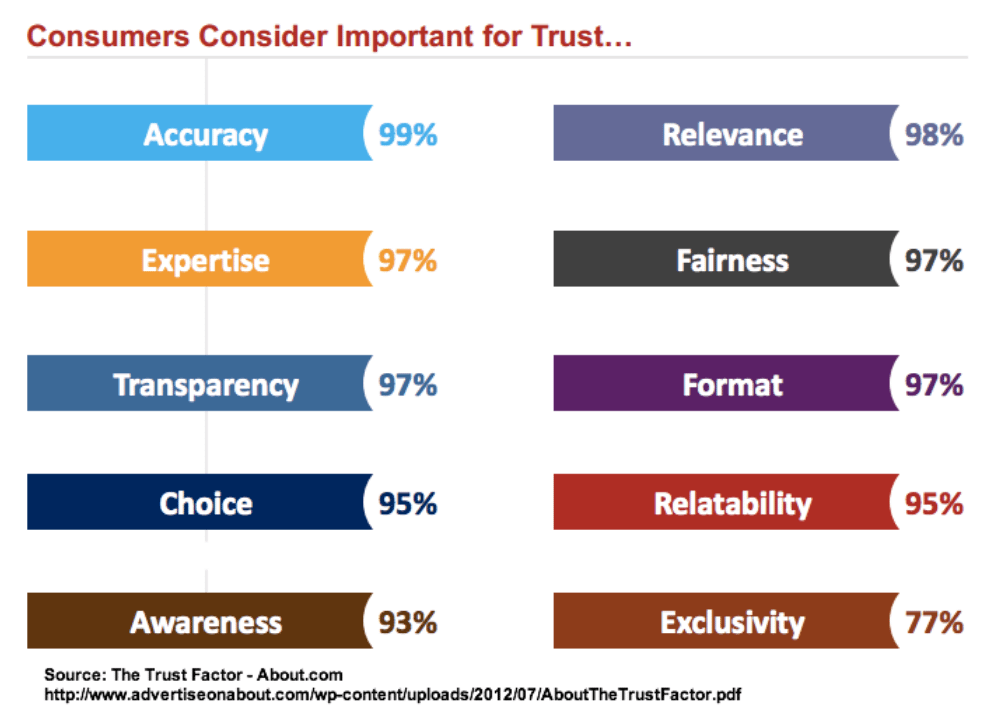
Blog Checklists From the Writer’s Perspective
To keep up with the high output of content needed to get ahead, marketers are turning to professional writers to help them out.
These are people that craft stories for a living and bring to life potentially boring and complicated topics to boost your authority and online presence.
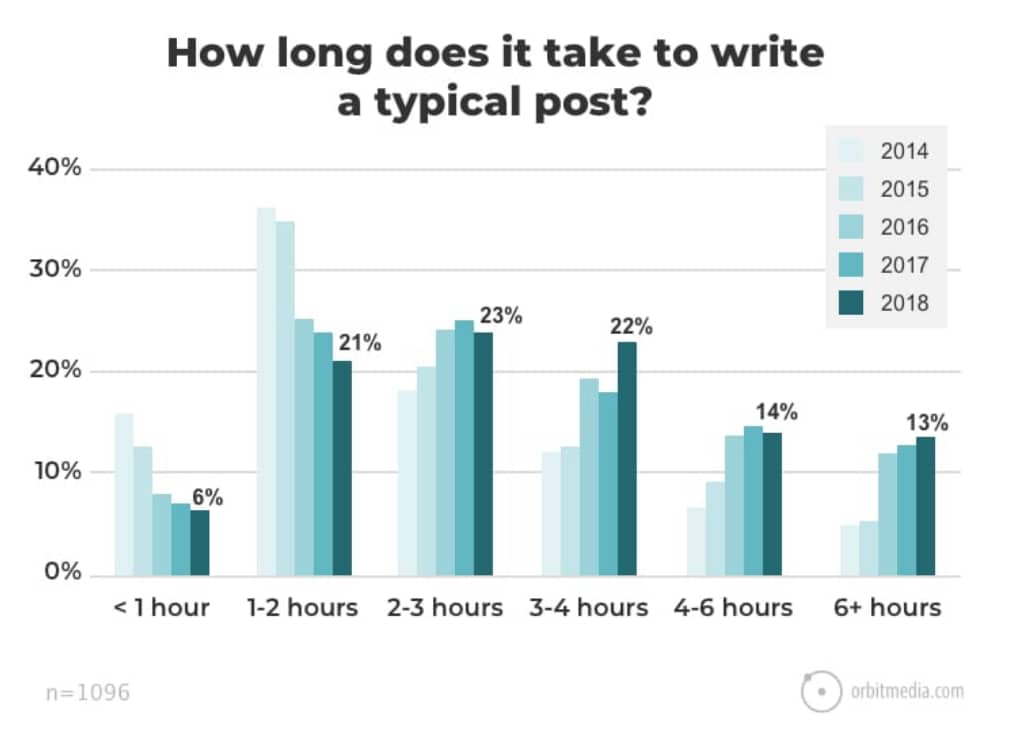
Working together with writers can be a fun and creative process if it’s done right, which again is where your trusty blog checklist comes in handy.
- Understand What the Clients Want
A detailed blog checklist helps writers understand what their client wants and their aims with the content.
This in turn cuts down the amount of time spent editing and avoids any backwards and forwards-ing that results from poor communication.
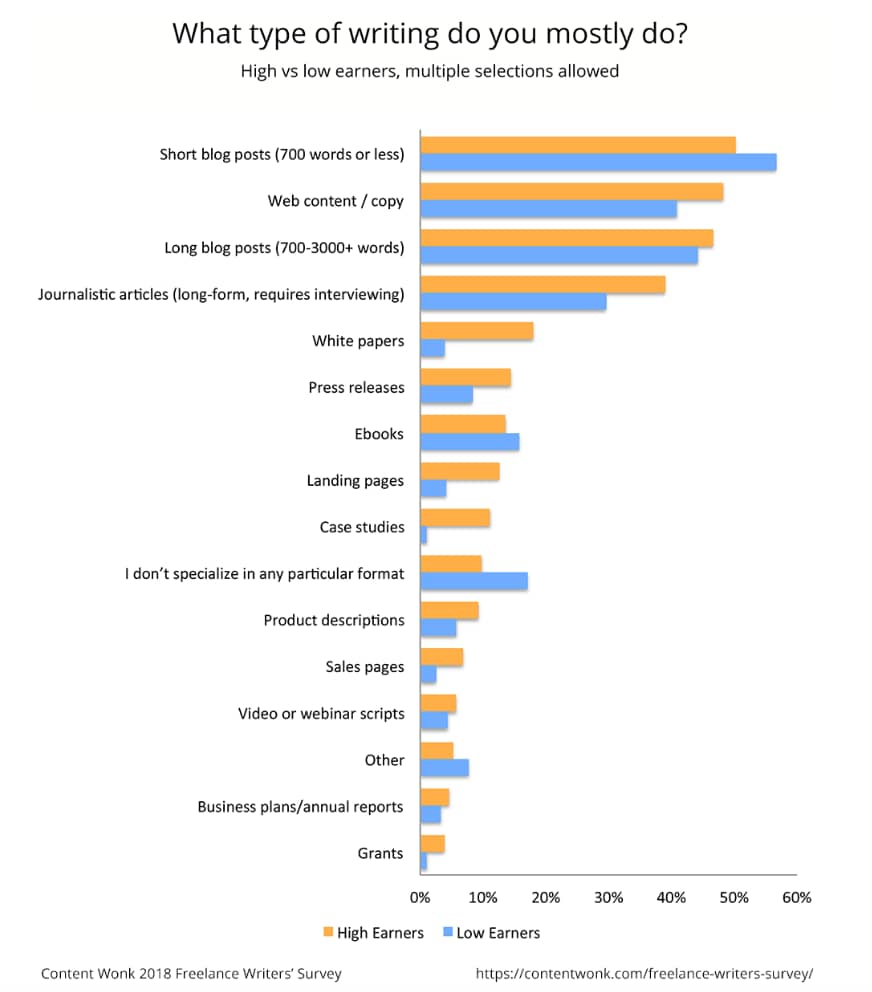
- Better Understand Brand Messaging and Tone of Voice
Writers might work with several brands a week, each of which has a totally different voice and personality. It’s down to the writer to highlight the difference between these simply by using their words – a prospect that can get muddled quite quickly.
A blog checklist avoids wishy-washy messaging by helping writers understand exactly the tone of voice you want to get across and what message you want to send out to your audience.
Video: https://www.youtube.com/watch?v=0ztM3XlHfes
- Produce High-Quality Content Every Time
You might think that writing so many words a week is bound to cause some lapse in quality every now and again. And, while it’s true that this can happen (welcome to the creative industries!), a blog checklist can help minimize this risk.
Writers can tick off the elements they’ve added in to ensure top-notch quality and have an understanding of what still needs to be done to get a piece to where it needs to be.
The Difference Between Working With a Blog Checklist and Without One
If you’re still on the fence about whether a blog checklist is for you, let me tell you a story about working with a client that had a blog checklist and one that didn’t.
Client A (the one with a checklist) knew exactly what they wanted from a piece. They knew what their SEO goals were and helped me to implement those within the text. This eliminated any confusion I might have had about what keywords to use and where I should be using them.
and where I should be using them.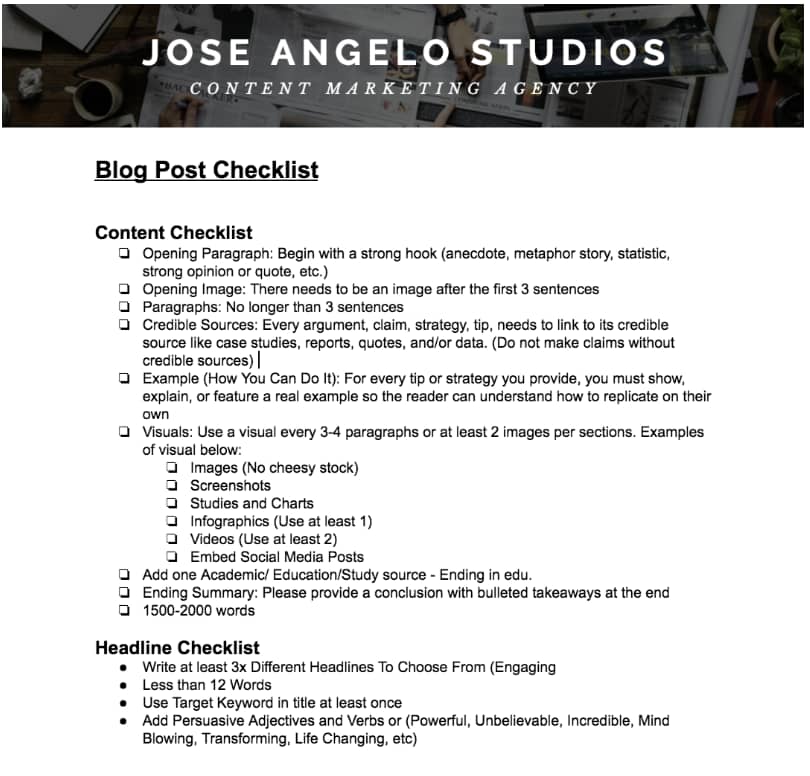 When writing
When writing
When writing the first draft, I could report back to the checklist to see where the piece was lacking and touch it up so it was better. This meant we only had to do one round of edits, and the client had their finished piece within a week.
Client B (the one without a checklist), on the other hand, revealed a slightly different experience.
The goal posts seemed to keep changing throughout the process, which made it seem like the client didn’t really know what they were doing or what they wanted to achieve with the piece.
When it came to editing, the client kept wanting huge chunks of changes which took hours of tweaking and communication. Not only did this slow down the whole process (it took three weeks for the client to eventually express happiness with the piece), but it wasted a ton of time on both sides; time that the client could have better spent elsewhere in their business.
Be Consistent With a Blog Checklist
Consistency is key in content when it comes to building trust and establishing a strong online presence, and a blog checklist is a vital tool in your journey to consistent content output.
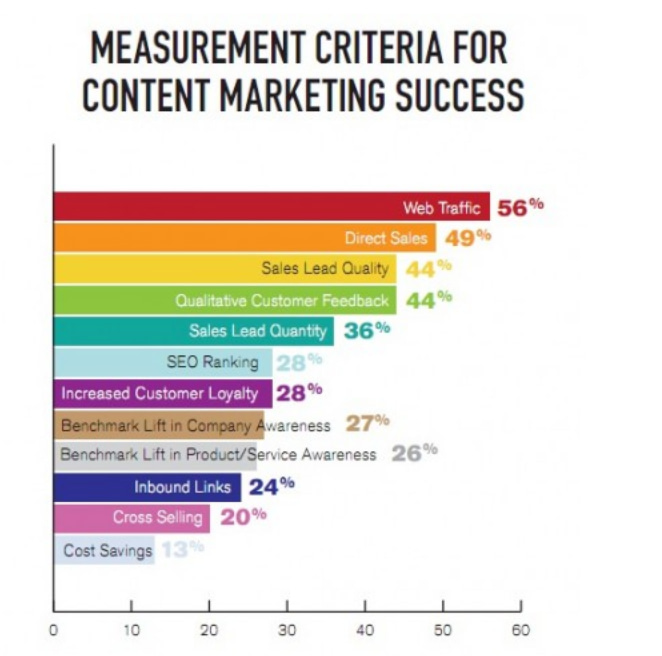 SourceIt’s super simple to execute
SourceIt’s super simple to execute
It’s super simple to execute and will help you produce high-quality content for months and years to come.
To recap:
- Blog checklists help maintain consistency and high quality content across the board
- Break your checklist up into sections to help streamline the process
- Use your blog checklist to make the most of your successes and to exponentially scale your content output
- Make writers lives easier by helping them understand what you want
Your turn! What tick boxes do you have on your blog checklist?
